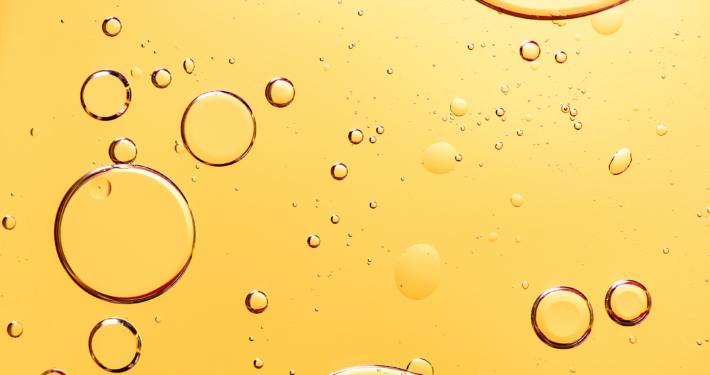The Science of Urushiol Oil: Unlocking the Secrets Behind Poison Ivy, Oak, and Sumac Rashes
Urushiol oil, a potent allergen found in poison ivy, poison oak, and poison sumac, is the primary cause of allergic contact dermatitis in millions of people each year. The immune system’s reaction to urushiol triggers inflammation, redness, and itching, resulting in the characteristic rash associated with these plants. Understanding the biology behind urushiol and its effects on the skin is critical for developing better treatments and preventive measures.
By: Richard Rich
Introduction
Plant dermatoses, including allergic contact dermatitis (ACD), mechanical irritant contact dermatitis, chemical irritant contact dermatitis, light-mediated dermatitis, and pseudophytodermatitis, pose significant risks to occupational health and worker safety. Particularly in agriculture, forestry, and other outdoor occupations, exposure to plants such as those in the Toxicodendron genus (poison ivy, poison oak, and poison sumac) can lead to ACD, the most common cause of plant-induced dermatitis. Other plants, such as those from the Compositae, Alstroemeriaceae, and Rutaceae families, also contribute to dermatitis cases. In individuals with recurrent ACD from plants other than Toxicodendron, patch testing can help identify the source of allergic reactions.
Toxicodendron dermatitis affects millions of people annually and results in substantial medical costs and lost work time. In the United States alone, 43,000 emergency department visits per year are attributed to poison ivy, oak, or sumac exposure. Affecting 10 to 50 million Americans per year, this form of ACD is the single most common allergic contact dermatitis in North America. Understanding the epidemiology, pathophysiology, identification, immunochemistry, and clinical features of plant dermatoses is crucial for effective treatment and prevention. This article provides an overview of various plant dermatoses, common culprits, and diagnostic and therapeutic options for managing plant-induced skin reactions.
The Chemistry of Urushiol Oil
Urushiol is an oil found in plants of the Toxicodendron species, including poison ivy, poison oak, and poison sumac. This oil is responsible for causing allergic contact dermatitis, which affects millions of people in North America every year. Urushiol is colorless or slightly yellow and oxidizes, polymerizes, and turns black when exposed to air. It is found in the stems, roots, leaves, and skin of the fruits of these plants.
Urushiol is a mixture of several closely related organic compounds, each consisting of a catechol (1,2-dihydroxybenzene) substituted in the 3 position with a hydrocarbon chain that has 15 or 17 carbon atoms. The hydrocarbon group may be saturated or unsaturated, and the exact composition of the mixture varies depending on the plant source. The likelihood and severity of an allergic reaction to urushiol depend on the degree of unsaturation of the hydrocarbon chain.
In most individuals, urushiol causes an allergic skin rash on contact, known as urushiol-induced contact dermatitis. This reaction is mediated by an acquired immune response. Urushiol is too small a molecule to directly activate an immune response, so it attaches to certain proteins of the skin, where it acts as a hapten, leading to a type IV hypersensitivity reaction.
Urushiol is produced exclusively in the sap of poison ivy and related plants but can be found on the surface when the plant is damaged or during the late fall when it naturally leaks out. The oil can remain on surfaces like clothing, tools, and animal fur for months or even years if not properly washed and cleaned. It’s essential to thoroughly wash yourself, your clothing, and anything else that might have come in contact with the plant to avoid spreading the rash.
Understanding How Urushiol Causes a Rash
Urushiol oil, found in poison ivy, poison oak, and poison sumac, is the culprit behind the itchy and painful rash that many people experience after contact with these plants. To understand how urushiol causes this rash, we first need to break down the science behind this oil and how it interacts with our immune system.
Urushiol is a chemical compound that has a particular structure made up of a ring-shaped molecule and a chain of carbon atoms. The structure of urushiol slightly varies between poison ivy, poison oak, and poison sumac, but these differences are minor. Because of the similarities, if a person is allergic to one of these plants, they will likely be allergic to all three.
When urushiol comes into contact with the skin, it binds to skin proteins and creates a new compound that the immune system sees as foreign. This triggers an immune response in people who are sensitive to urushiol. The immune system’s reaction to the foreign substance leads to inflammation, redness, and itching, resulting in an allergic skin rash known as contact dermatitis.
The process starts with specific cells in the skin, called Langerhans cells, which capture the urushiol compound and transport it to nearby immune cells, known as T lymphocytes. These T lymphocytes are activated and travel back to the site of contact, releasing various chemicals that cause inflammation and the itchy rash we associate with poison ivy, poison oak, and poison sumac.
In addition to the immune cells, other cells in the skin also contribute to the rash’s development. For instance, keratinocytes, which are skin cells that form the outer layer of our skin, release various chemicals in response to urushiol exposure. These chemicals amplify the immune response, causing further inflammation and itching.
Recent research has shown that a molecule called IL-33 plays a significant role in causing itchiness from urushiol exposure. IL-33 interacts with specific receptors on nerve cells, which then send signals to the brain, creating the sensation of itch. Inhibiting the action of IL-33 or its related pathways may help alleviate the itch associated with urushiol-induced contact dermatitis.
In summary, urushiol from poison ivy, poison oak, and poison sumac causes an itchy rash by triggering an immune response and activating various skin and nerve cells. Understanding the biology behind urushiol and its effects on the skin can help develop better treatments and preventive measures for those who are sensitive to these plants.
Why Some People Are More Susceptible Than Others
A large portion of the population is sensitized to urushiol, the allergenic component of poison ivy, poison oak, and poison sumac. Acute allergic dermatitis affects people of all ages, ethnicities, and skin types, with an estimated 25 to 40 million cases requiring treatment yearly. Occupational exposure is common among forest service workers and comprises many of these cases, with exposure to extremities being more frequent.
Sensitization to urushiol varies among individuals due to genetic factors, age, and environmental exposure. Peak frequency for sensitization occurs between 8 and 14 years of age, while infants are less easily sensitized. Approximately 50% to 75% of the US adult population is clinically sensitive to poison ivy, oak, and sumac, with the prevalence being closer to 20% in large urban areas where these plants are less common. About 10% to 15% of the population is tolerant.
The severity of the allergic contact dermatitis can vary depending on factors such as differing concentrations of antigen and time of exposure. Some rare manifestations of the condition include black spot dermatitis and erythema multiforme in severe cases. Long-term complications are uncommon, but hyperpigmentation and secondary infections can occur in some individuals.
The clinical presentation of the dermatitis typically includes sharply demarcated erythematous papules and vesicles that appear within 24 to 48 hours following exposure, although the time range can vary from 5 hours to 15 days. The linear markings and sharp borders are key features that aid in the identification of this plant dermatitis. Occupational workers can experience additional complications like generalized dermatitis and respiratory tract inflammation due to aerosolization of urushiol in wildfire smoke. Without treatment, Toxicodendron dermatitis can last for 3 weeks and up to 6 weeks in highly sensitized individuals, significantly affecting their quality of life.
Prevention and Treatment
The prevention and treatment of Toxicodendron dermatitis primarily focuses on alleviating symptoms, such as itchiness. Therapeutic relief can be achieved through baths with baking soda and colloidal oatmeal, cold compresses, and over-the-counter topical treatments like calamine lotion, which helps relieve dryness and reduce itchiness. High potency topical corticosteroids, such as clobetasol, are most effective in the early stages of the reaction, while mid-potency alternatives like triamcinolone and betamethasone may be more cost-effective. For children, low potency topical corticosteroids like hydrocortisone are recommended to avoid side effects like skin atrophy. In severe cases, systemic corticosteroids like oral prednisone or intramuscular triamcinolone injections may be necessary.
Antihistamines have limited efficacy due to the histamine-independent itch mechanism, but they are still considered a treatment option for allergic contact dermatitis caused by Toxicodendron species. Topical immunomodulators like tacrolimus and pimecrolimus can help reduce itchiness by inhibiting the immunological cascade. Topical JAK/STAT inhibitors have shown promise in reducing itchiness in allergic contact dermatitis treatment, but further evaluation is required.
Prevention methods include limiting exposure to Toxicodendron species, washing affected areas immediately upon exposure, pretreatment with topical barriers, and desensitization. Washing within 10 minutes of exposure can remove up to 50% of the urushiol substance. Chemical inactivators such as I.C. Ivy Cleanse have been found to significantly remove urushiol from the skin. Topical barriers like I.C. Ivy Block can help prevent or limit reactions to urushiol.
Desensitization through ingestion of poison ivy leaves, a practice used by Native Americans, is controversial due to conflicting evidence and potential side effects. There are ongoing clinical trials investigating the use of a vaccine injection, 3-pentadecyl-1,2-phenylene bis (4-(4-aminophenyl)butanoate) (PDC–APB), to prevent contact dermatitis caused by poison ivy, oak, and sumac.
In addition to these treatments, proper identification and avoidance of Toxicodendron species, wearing protective gloves and clothing, and using barrier creams can help prevent plant dermatoses. If exposure occurs, washing the allergen off with soap and water as soon as possible is recommended.
Conclusion
In conclusion, urushiol oil, found in poison ivy, poison oak, and poison sumac, is responsible for causing allergic contact dermatitis in millions of people annually. Understanding the chemical composition of urushiol, how it interacts with the immune system, and the reasons behind varying susceptibility among individuals is essential in addressing the challenges posed by these plants. By implementing effective prevention methods and treatments, such as I.C. Ivy Cleanse and I.C. Ivy Block, people can minimize the risk of severe reactions and improve their quality of life. Future research may lead to the development of new treatments and preventive measures, such as vaccines, further reducing the burden of plant-induced dermatoses on both individuals and occupational workers.







